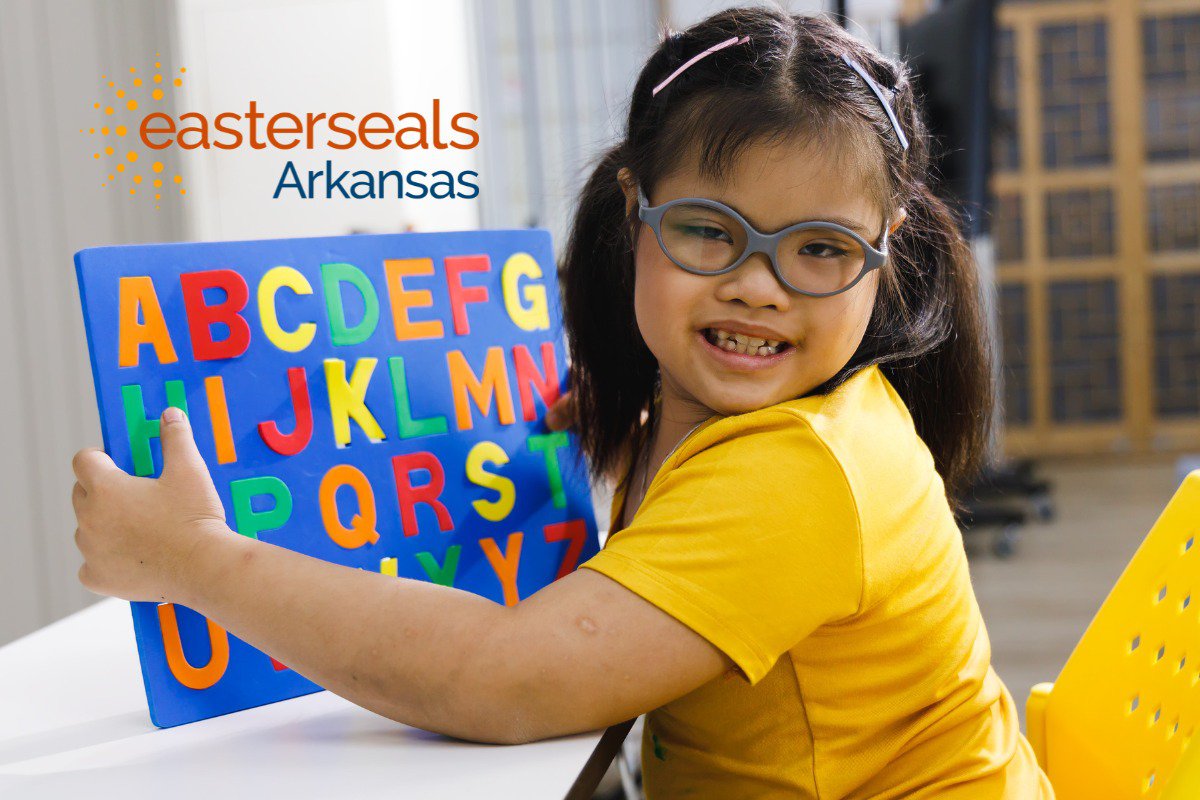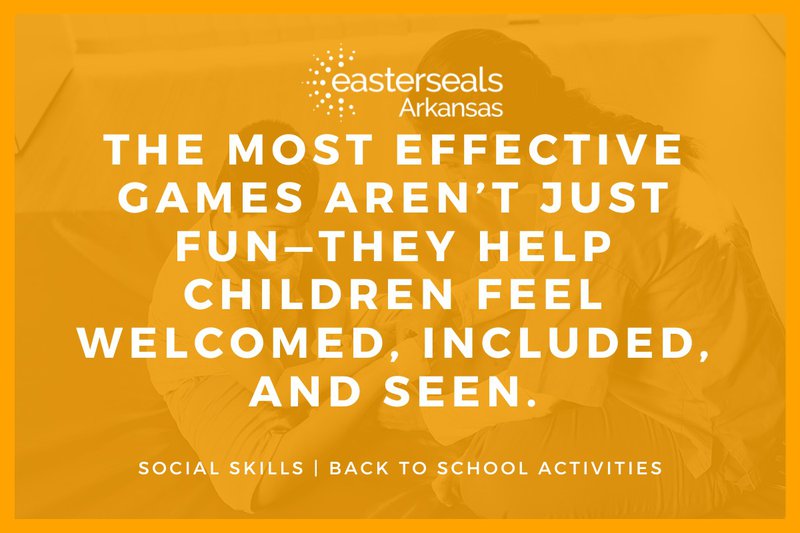
Social skills back-to-school activities are essential for creating an inclusive and welcoming environment. The first day of school, especially for kids with Down syndrome, can feel overwhelming. Ensuring they feel safe, welcome, and ready to connect is essential. Day-one social games play a crucial role in this process by building trust, starting friendships, and easing fears. This guide presents fun, proven activities designed to help children thrive from day one.
Key Takeaways:
- Top back-to-school games include: The Name Game, Four Corners, Pass the Compliment, Barnyard, Roll the Ball, and Would You Rather.
- Effective SEL games: Emotion charades, storytelling, "Find Someone Who…", and picture books to build empathy and emotional intelligence.
- Morning routines with check-ins and greetings promote emotional safety and classroom community.
- Best teamwork activities: Keep It Up (balloon), Octopus Tag, group art, and building challenges.
- Games to teach conflict resolution: Share and Switch, role-play, and classroom jobs.
- Inclusive strategies: Calm-down corners, buddy systems, choice in participation, visual aids, and sensory-friendly starts.
- Identity-building projects: “All About Me” crafts, vision boards, goal-setting journals, and kindness posters.
- Play-based fairness: Ball-passing games, Clap and Repeat, Jenga, Token Stack, and Freeze leaders.

Social Skills Back-to-School Activities to Encourage Peer Interaction
Creating an inclusive and welcoming environment is vital on the first day. Effective back-to-school social games provide a gentle and fun way for children to connect while developing important skills like teamwork, listening, and fairness.
Name Recall and Group Movement Games
The Name Game: Children sit in a circle and take turns rolling a ball while saying the name of the person they pass it to. This simple game supports name recall and helps kids feel seen and remembered.
Four Corners: Label room corners with topics like favorite food or color. As choices like “pizza” or “ice cream” are called out, kids run to their pick, meeting others who share their interests. More on creating connections can be found here.
Would You Rather?: Questions such as “Would you rather fly or be invisible?” foster learning without pressure and can help children learn about each other.
Games for Young Children and High Energy Groups
Roll the Ball: In a tight circle, children practice turn-taking and patience by pausing and making eye contact before rolling the ball. This game reinforces social cues.
Barnyard: Children receive a card with an animal name and make that animal sound to find others with the same sound. This listening game breaks the tension quickly and encourages teamwork among high-energy groups.
Pass the Compliment: Simple yet effective, this game involves passing a soft ball while saying something kind about a classmate. It fosters appreciation and boosts confidence.
SEL Morning Routines and Peer-Sharing Games
Find Someone Who…: A bingo-style sheet with prompts like “has a pet” or “likes math” encourages kids to move around and ask friendly questions, ensuring everyone is included.
SEL Morning Routines: Implementing these routines alongside games helps create a tone of respect and enjoyment. Explore more on how routines support social skills here.
Back-to-school social skills activities like these build the foundation for real friendships, fostering a welcoming and inclusive atmosphere.
Social Skills Back-to-School Activities: Morning Routines
Incorporating morning routines that support emotional awareness is key to creating a strong classroom community. These rituals help children feel connected and valued.
Building Emotional Awareness with Check-Ins
A group circle allows children to express their feelings with a question like “What color is your mood today?” This activity builds emotional recognition and connection.
Inclusive Greetings for All
Greeting each student by name and allowing them to choose their hello—such as a wave, fist bump, or bow—promotes belonging, especially for new and shy children. For more ideas, visit here.
Engaging Warm-Ups and Activities
Using “Would You Rather” warm-ups helps students find shared interests through fun and movement, paving the way for deeper connections.
Weekly talking circles, where students take turns speaking while holding a soft ball, cultivate listening skills and patience, reinforcing community ties.
Incorporating carefully planned morning routines from day one supports emotional growth and enriches the classroom experience.
These strategies create an environment where emotions are welcomed and learning can flourish seamlessly.
Social Skills Back-to-School Activities: Building Emotional Intelligence and Empathy
Enhancing emotional intelligence and empathy from the first day of school is crucial for nurturing students' social skills. By using engaging activities, children can learn to understand and connect with each other's feelings.
Emotional Understanding Through Stories
Reading stories with characters experiencing a range of emotions helps children visualize different feelings. Picture books showcasing moments like being left out or apologizing enable students to discuss what made the character feel that way. This activity builds emotional insight and problem-solving skills.
Explore our read-aloud list for SEL to enhance your classroom library.
Interactive Emotional Games
- Emotion Charades: Children act out feelings such as “proud” or “jealous.” Peers guess, enhancing emotional vocabulary and teaching how to decode facial expressions.
- Storytelling: Prompts like “One time I was brave…” encourage children to draw or write their continuation. This helps students express themselves and learn about others' experiences.
Using visual resources, such as emotion face posters labeled "happy," "tired," "worried," supports real-time learning. Introduce one emotion daily to reinforce understanding.
Check out more strategies on our inclusive classroom strategies page.
Pair Work and Deep Discussions
Pair work encourages connection. One student speaks while the other listens, strengthening bonds when common feelings are discovered.
Discuss "why" questions like “Why do you think she felt left out?” to prompt deeper thinking. Consider implementing draw-and-write sheets to journal their thoughts.
Social Skills Back-to-School Activities: Developing Collaboration and Communication
Promoting teamwork and communication from the start fosters a supportive classroom environment. Engaging games can break the ice and help students form new bonds.
Teamwork Through Play
- Keep It Up: Students work together to keep a balloon in the air. This game fosters cooperation, turn-taking, and verbal support. Modifying movements allows for comfort and inclusion.
- Octopus Tag: Players link arms when tagged, increasing in size. This game builds quick thinking and teamwork. Explaining how to safely link arms ensures everyone’s participation.
Collaborative Group Activities
- The Building Game: In small groups, children stack blocks or cups to create the tallest tower, sparking discussions on strategy.
- Group Art: Assign a mural where each child contributes. Discussing the process fosters communication and collective problem-solving.
Model effective teamwork and communication to support all learners, especially those who find social interactions challenging.
These social skills back-to-school activities build emotional and social competence, setting the stage for a harmonious and inclusive learning environment. Explore more on our site to see how we can support your educational needs. Feel free to contact us for additional resources.
Social Skills Back-to-School Activities: Building Strong Connections Through Teamwork
After participating in these engaging activities, you'll notice a transformation in how children interact. They begin to listen more attentively and offer help willingly, fostering a sense of community and belonging. The bonds formed during these games often extend beyond the classroom, creating lasting friendships. These activities not only enhance social skills but also build trust and empathy, essential elements for a harmonious learning environment. By encouraging teamwork and open communication, student relationships flourish, turning the classroom into a thriving hub of collaboration. If you're interested in learning more about how we can support your educational environment, feel free to contact us. We're here to help you create an inclusive and empowering space for all learners.
